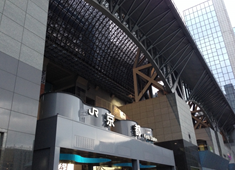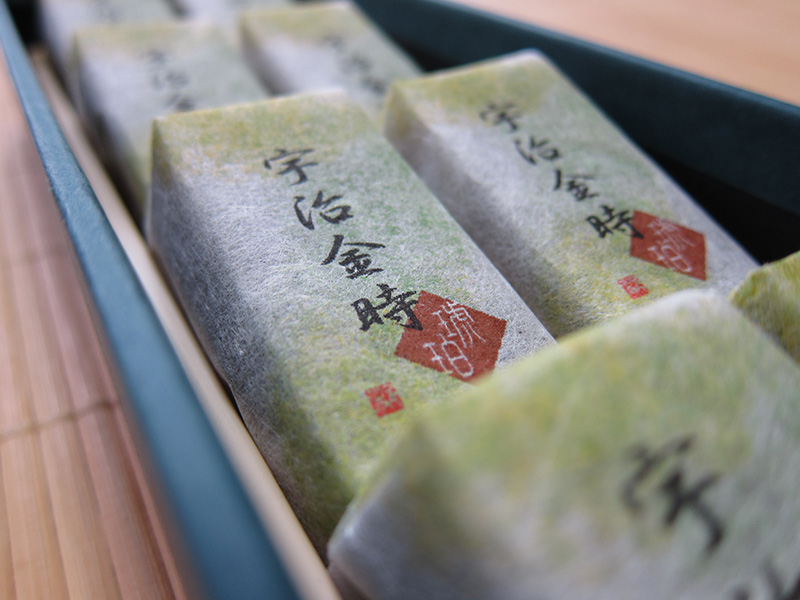KOHAKU
Kohaku is a Japanese word for “amber”, which is a gem transformed from the resins of ancient trees through millions of winters. The Japanese sweets made by boiling agar and sugar into jelly have been traditionally called “Kohaku” or “Kohaku sweets”, the names after the gem, because of their clear and brilliant appearance.
Kohaku has crisp surface and soft inside, which make enjoyable taste, and gives pleasure to your eyes.ハ
Kohaku has crisp surface and soft inside, which make enjoyable taste, and gives pleasure to your eyes.ハ
Deliciousness based on the history
and culture over 1200 years
and culture over 1200 years
The National Meeting for the Healthy Ocean is one of the Local Meetings which receive royal visit from the Emperor and Empress every year. At the 10th National Meeting for the Healthy Ocean held in Aomori Pref. in 1990, one of our sweets, “Yumekodachi” (literary means “dreamy trees”), got the honor of being purchased by the Emperor visiting the meeting.
At the National Confectionery Exposition held every four years, our sweets, “Yuzu*1 Kohaku” (citrus-flavored Kohaku), “Hanakazura” (literary means “flowered vine”) and “Uji-Kintoki Kohaku” (tea-flavored Kohaku containing sweetened adzuki beans) received “the Award from the Grand Master of Chado (the tea ceremony) of the Urasenke”.
Since early times, Kyoto sweets have been the articles for presentation at the events and ceremonies in the Imperial Court and an essential for the tea ceremony. Over the long time of the history, Kyoto sweets have been sophisticated owing to the evaluation by the court nobles and the masters of the tea ceremony who have a great sense of beauty, and the sweet-making techniques have been improved to make excellent sweets of artistic quality. We, Miyako, the Confectioner of Kyoto Sweets, are creating the sweets which can offer novel values to our customers by focusing all our imagination and creativity on our work and respecting the tradition.
At the National Confectionery Exposition held every four years, our sweets, “Yuzu*1 Kohaku” (citrus-flavored Kohaku), “Hanakazura” (literary means “flowered vine”) and “Uji-Kintoki Kohaku” (tea-flavored Kohaku containing sweetened adzuki beans) received “the Award from the Grand Master of Chado (the tea ceremony) of the Urasenke”.
Since early times, Kyoto sweets have been the articles for presentation at the events and ceremonies in the Imperial Court and an essential for the tea ceremony. Over the long time of the history, Kyoto sweets have been sophisticated owing to the evaluation by the court nobles and the masters of the tea ceremony who have a great sense of beauty, and the sweet-making techniques have been improved to make excellent sweets of artistic quality. We, Miyako, the Confectioner of Kyoto Sweets, are creating the sweets which can offer novel values to our customers by focusing all our imagination and creativity on our work and respecting the tradition.
Japanese sweets connecting our customers with Kyoto
If you feel beauty in our KOHAKU, you may find the beauty of the old capital we added to the appearance of the sweets.Kyoto is surrounded by hills and mountains on three sides associated with the distant view of the flow of the Kamo River on the eastern side, the Katsura River on the western side and the Uji River on the southern side, thus is filled with the abundant beauties of nature all through the year.
The flow of Kamo river is symbolized in “Yuzu Kohaku”, a clear Kohaku sweet made by boiling down agar and sugar and adding Yuzu*1 peel to resemble the sunshine glittering on water surface and the waterweed dancing in flowing water. A spring scene of misty cherry blossoms in full bloom is expressed in the sweet, “Hanakasumi-no Utage” (literary means a party under misty cherry blossoms), a clear Kohaku sweet containing pink petal-shaped Kohaku pieces. We hope the sweets will be selected for your teatime and as a gift, and you will enjoy their taste and appearance showing the beauty of Kyoto.
For over 80 years since the start of our business, we have been devoting our best effort and thought to our work at Fushimi with our continuing philosophy in mind, “We offer a relaxing moment with our delicious sweets”. It is our great pleasure that you find the aesthetic feeling of Kyoto in the sweets of Miyako, the Confectioner of Kyoto Sweets.
*1: Citrus junos
The flow of Kamo river is symbolized in “Yuzu Kohaku”, a clear Kohaku sweet made by boiling down agar and sugar and adding Yuzu*1 peel to resemble the sunshine glittering on water surface and the waterweed dancing in flowing water. A spring scene of misty cherry blossoms in full bloom is expressed in the sweet, “Hanakasumi-no Utage” (literary means a party under misty cherry blossoms), a clear Kohaku sweet containing pink petal-shaped Kohaku pieces. We hope the sweets will be selected for your teatime and as a gift, and you will enjoy their taste and appearance showing the beauty of Kyoto.
For over 80 years since the start of our business, we have been devoting our best effort and thought to our work at Fushimi with our continuing philosophy in mind, “We offer a relaxing moment with our delicious sweets”. It is our great pleasure that you find the aesthetic feeling of Kyoto in the sweets of Miyako, the Confectioner of Kyoto Sweets.
*1: Citrus junos
Handling store

- Our products are sold at the shops in Kyoto Station Building and in and near Kyoto Station.
“MIYAKO”(1F) and “KYO-MEIKA TAKUMI”(B1F) at the
shopping mall “The CUBE” in Kyoto Station Building
"KYO-MEIKA, OHARA" at ASTY ROAD in Kyoto Station
"KYO-MEIKA" at the underground shopping mall "Porta" near
Kyoto Station
Our products are also sold at retail shops in Kyoto and other
cities and towns nationwide.


